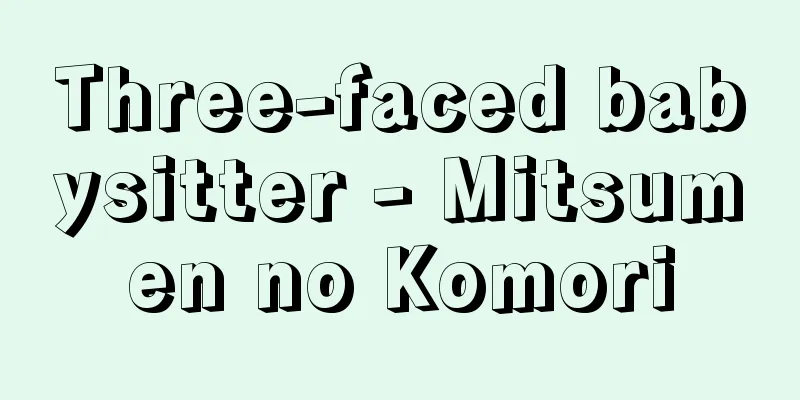Senzai Wakashu - Anthology of Poems

|
The seventh imperially commissioned anthology of waka poetry. Compiled by Fujiwara no Shunzei. Ordered by Emperor Goshirakawa in February 1183 (Juei 2), just before the Taira clan fled the capital, it was formally presented in 1187 (Bun'ei 3) after the end of the Genpei War, and completed the following year when Shunzei was 75 years old. The previous imperial anthology, Shikashu, was strongly criticized in the poetry world, and this sentiment gave rise to anti-Shikashu private anthologies such as Shui Kokin and Goyoshu. Shunzei had also been compiling private anthologies (Sango Daishu, lost) since his 50s, around the time of Emperor Takakura, and it is believed that these were the basis for the development of the imperial anthology. The Budate collection returns to the 20 volumes that preceded the Goshuishū, moving away from the 10-volume format of the Kin'yōshū and Shikashū, and shows innovations such as the introduction of new sections on Buddhism and Shinto. The collection contains 1,288 poems by 385 poets from the time of Emperor Ichijō onwards, placing great importance on contemporary poets, with a not insignificant proportion of female and monk poets. The "unknown readers" section includes poems by Taira Tadanori, well known for his The Tale of the Heike, as well as poems by Taira poets who were punished by the shogun, such as Tsunemori and Tsunemasa. The selection of 126 poems from the "Kyuan Hyakushu" (sponsored by Emperor Sutoku), which "Shikashu" barely included, and their use in forming the style of the Four Seasons section of "Senzaishu" can be understood as the intention of Shunzei, the compiler, to base "Senzaishu" on the lyrical style of poetry from the time of this Hyakushu. The period of change from the Hogen Rebellion to the Genpei War narrowed the room for comfort with the mainstream of intellectualistic aristocratic waka poetry since Ki no Tsurayuki, and increased the number of nostalgic lyric poems that lament real circumstances. The aim of the "Senzaishu" to restore lyricism is of course a reflection of this, but this direction is linked to the lingering and seductive beauty of the Shin Kokin era, along with the development of poetry composition techniques that incorporate the classics. [Yoichi Matsuno] "Senzai Wakashu, edited by Jun Kubota and Yoichi Matsuno (1969, Kasama Shoin)" ▽ "Senzai Wakashu and its Surroundings, Collected Works of Shigeru Taniyama, Volume 3 (1983, Kadokawa Shoten)" Source: Shogakukan Encyclopedia Nipponica About Encyclopedia Nipponica Information | Legend |
|
第7番目の勅撰(ちょくせん)和歌集。藤原俊成(しゅんぜい)撰。平氏都落ち直前の1183年(寿永2)2月に後白河(ごしらかわ)院の下命があり、源平戦乱終息後の1187年(文治3)に形式的奏覧、翌年俊成75歳のおりに完成した。前勅撰集の『詞花(しか)集』に対しては歌壇に強い批判があり、その気運のなかから『拾遺古今』『後葉集』などの反『詞花集』的私撰集が生まれた。俊成も50歳代の高倉(たかくら)天皇期のころから私撰集(『三五代集(さんごだいしゅう)』、散逸)を撰じており、それが母胎となって勅撰集に発展したと推定されている。部立(ぶだて)は『金葉集』『詞花集』と続いた10巻仕立てから、『後拾遺集』以前の20巻に復し、釈教、神祇(じんぎ)の新設などにくふうを示している。収載歌は、一条(いちじょう)天皇時代以降の385人の歌人の1288首で、当代歌人をかなり重視し、女流、僧侶(そうりょ)歌人の比率も小さくない。なお「読人しらず」には『平家物語』でよく知られている平忠度(ただのり)のほか、経盛(つねもり)・経正(つねまさ)ら勅勘の平家歌人の歌が含まれている。『詞花集』がほとんど採歌しなかった『久安(きゅうあん)百首』(崇徳(すとく)院主催)から126首もとり、『千載集』四季部の風格形成に利用しているのは、本百首のころの叙情的歌風を『千載集』の基調に据えようとする撰者俊成の意図として理解されよう。保元(ほうげん)の乱から源平争乱期にかけての変動期は、紀貫之(きのつらゆき)以来の知巧主義的な貴族和歌の主潮に安住する余地を狭め、現実の境遇を詠嘆する述懐性の濃い叙情歌を増大させた。『千載集』の叙情性回復の指向も当然その反映だが、その方向は古典摂取の詠作手法の開拓に伴って新古今的余情妖艶(ようえん)美に連なっていく。 [松野陽一] 『久保田淳・松野陽一校注『千載和歌集』(1969・笠間書院)』▽『『谷山茂著作集 3 千載和歌集とその周辺』(1983・角川書店)』 出典 小学館 日本大百科全書(ニッポニカ)日本大百科全書(ニッポニカ)について 情報 | 凡例 |
Recommend
element of sulfur family
…They are also called the oxygen family. Since po...
embryoid
…In this experiment, roots were first formed from...
Torii Kiyomasu - Take it
Ukiyo-e artist from the mid-Edo period. There are...
The Universality of the Air Force - kuugunban no uron
…England, which was interested in the success of ...
Gin Palace (English spelling) Ginpalace
…In place of the “pub culture,” the middle class,...
Harmonic functions
If a function of n variables u ( x 1 , x 2 ,……, x...
Gulf of Bothnia
The northern part of the Baltic Sea in Northern E...
Quality paper
A high-quality newspaper with an elite readership....
Euphorbia resinifera (English spelling)
...Many are used medicinally, such as castor bean...
Mukunashi Tota - Mukunashi Tota
Year of death: 28th of leap year 5, 1865 (July 20,...
Patience - patience
A translation of the Sanskrit word asmimāna. In B...
Onshi - Onshi
Tondichtung is a type of program music that expres...
banda taurina
...It is also characterized by its Spanish folk c...
Vörösmarty Mihály
Born: December 1, 1800, Karpolnarsnyek [Died] Nove...
Aestheticism
Aestheticism is a worldview or outlook on life tha...





![Yasu [town] - Yasu](/upload/images/67cd0b0e7eaf5.webp)



